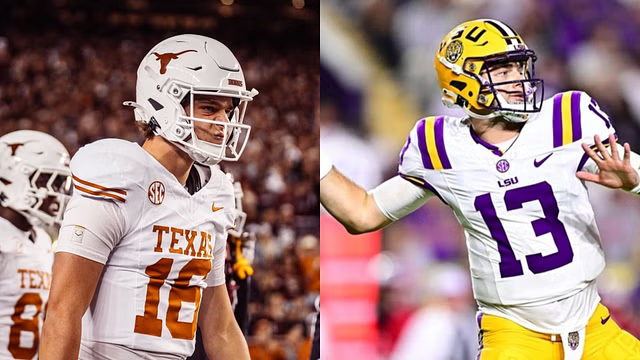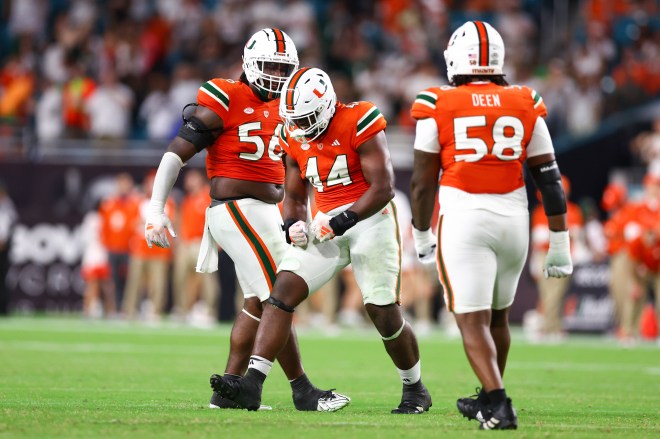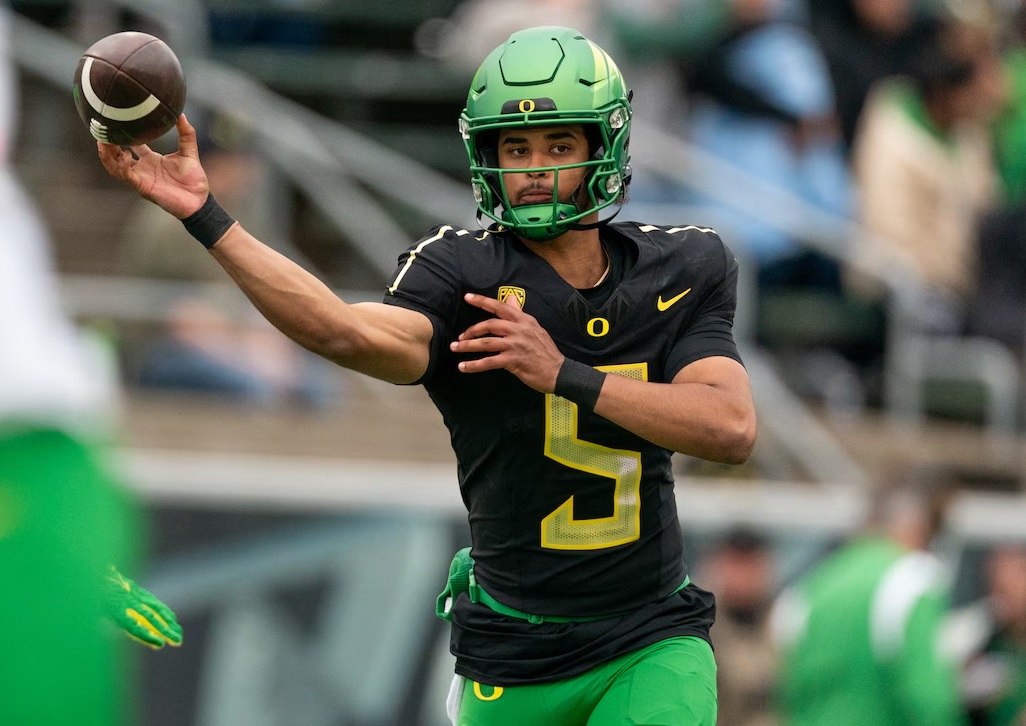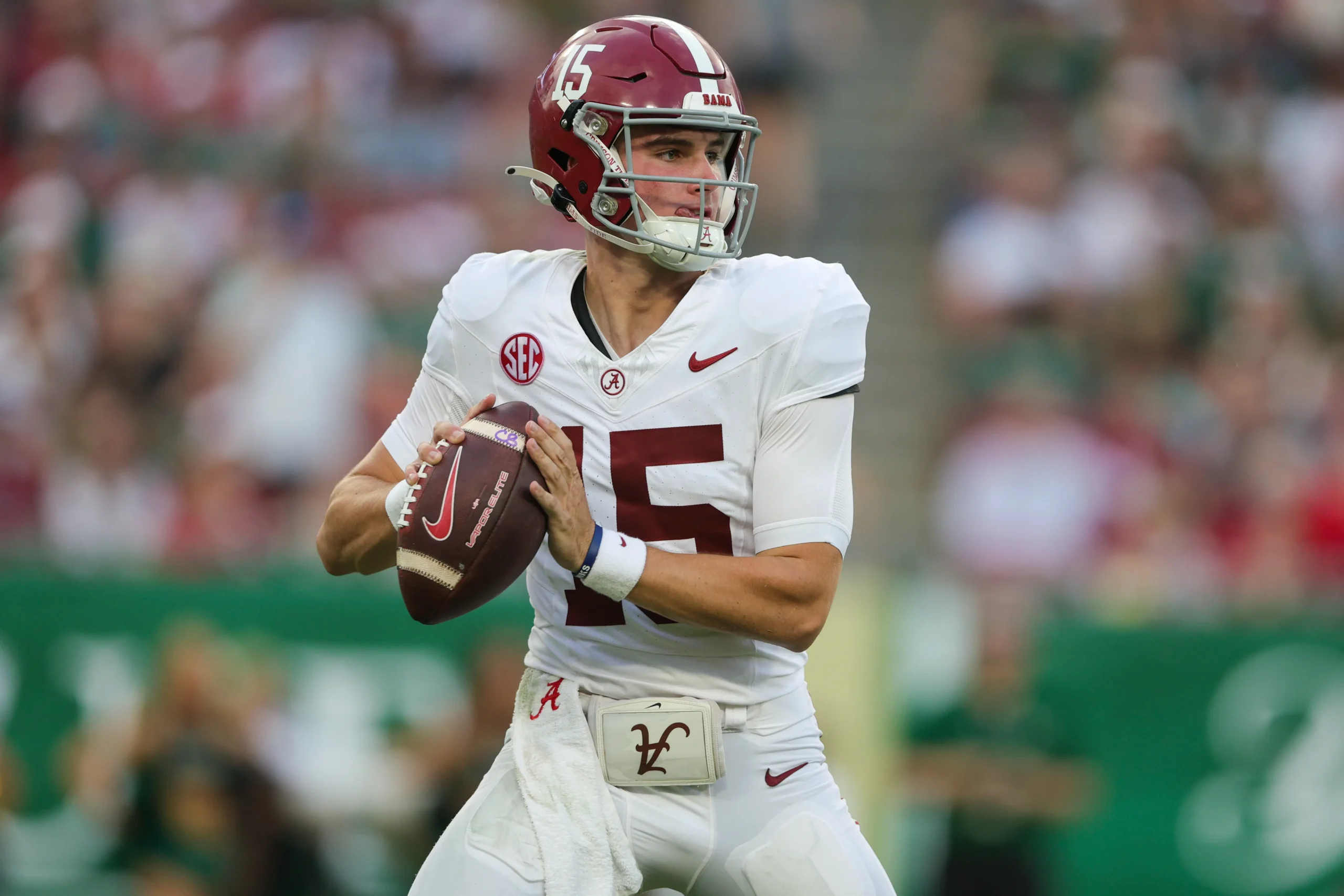By Charlie Campbell.
Send Charlie an e-mail here: [email protected]
Follow Charlie on Twitter @draftcampbell for updates.
This page was last updated April 6, 2023. Follow me @walterfootball for updates.
Tight End Class
Early-round talent: A
Mid-round: A
Late-round: B+
Overall grade: A
Merging the 2023 and 2022 prospects
Dalton Kincaid
Michael Mayer
Sam LaPorta
Darnell Washington
Luke Musgrave
Trey McBride
Jelani Woods
Greg Dulcich
Jeremy Ruckert
Cade Otton
Just to be clear this article and series is all my opinion based off my own study and information I’ve gotten from general managers, directors of college scouting, national scouts, area scouts, and NFL coaches who know way more than I do.
The 2022 NFL Draft was an underwhelming year for tight end as a whole, but fortunately for NFL teams, the 2023 NFL Draft is loaded at the tight end position. Multiple tight ends could end up as first-round selections, and there should still be many more nice value picks in the rounds to follow. The 2023 NFL Draft has the potential to be a historic year for good tight ends.
If you were to merge the two classes, it would be an clear that the 2023 group dominates. Trey McBride was the top tight end for 2022, but he was not as good as the first five tight end prospects in the 2023 NFL Draft.
Safest Pick: Sam LaPorta, Iowa

Previous Picks:
2022: Trey McBride
2021: Kyle Pitts
2020: Adam Trautman
2019: T.J. Hockenson
2018: Hayden Hurst
2017: O.J. Howard
2016: Hunter Henry
2015: Clive Walford
2014: Eric Ebron
2013: Zach Ertz
I think LaPorta could be one of the steals of the 2023 NFL Draft because he is a very dangerous receiver and an effective blocker. While other tight ends have received more media hype, LaPorta has a lot of fans among NFL teams. They have said he is a safe pick to turn into a good three-down starter as a pro and provide a valuable receiving contribution while also helping as a blocker.
Biggest Bust Potential: Will Mallory, Miami

Previous Picks:
2022: Grant Calcaterra
2021: Hunter Long
2020: Hunter Bryant
2019: Noah Fant
2018: Jordan Akins
2017: Adam Shaheen
2016: Nick Vannett
2015: Nick O’Leary
2014: Jace Amaro
2013: Gavin Escobar
Mallory has a lot of talent, including good speed and quality size. However, he is a very soft blocker who has inconsistent hands. Mallory also never played up to his potential at Miami. After a good combine workout, he has a shot at being a second-day pick, but I think he could end up being a disappointment if he’s taken that high in the 2023 NFL Draft.
Tight End Rankings by Attributes
Pass Receiving:
NFL prototype: Travis Kelce, Chiefs
- Dalton Kincaid
- Michael Mayer
- Sam LaPorta
- Luke Musgrave
- Darnell Washington
Recap: The NFL has evolved to the point where tight ends are a critical part of a potent passing attack. Some teams have better receiving weapons at tight end than they do at wide receiver. The league is driven by the pass, so if a tight end can’t contribute as a receiver, he could have a hard time seeing the field. The 2023 NFL Draft class has some excellent receiving tight ends for the next level.
Kincaid has the skill set to be a dangerous receiver down the seam and in the red zone like he was in college. Kincaid has the quickness to get downfield, and he has a surprising burst for a tight end. He also possesses excellent hands and is very skilled at going up high to make receptions over defensive backs. Even though Kincaid isn’t the biggest of tight ends, he has good body control and uses his size well to shield the ball from defenders to make the catch. Kincaid has good play strength and uses that power to disengage from defenders to get open after contact is initiated. Kincaid runs good routes, is smart to find the soft spots in zone, and demonstrates good feel as a receiver. After the catch, Kincaid is a tough runner who has a burst, can weave through the secondary, and can break some tackles. As a pro, Kincaid should be a reliable and steady weapon in the passing game.
Mayer is a dangerous receiving tight end who is a good athlete with quickness, size, and the natural instincts of a pure football player. He has the potential to be a dangerous receivier contributes well to an NFL passing attack. He has a well-rounded set of tools as a receiving tight end to beat defenses in a variety of ways. Mayer has mismatch size and is very adept at going up to make contested catches over defenders. He high points the ball well, and uses his strong hands to control the ball while getting hit.
LaPorta illustrated real receiving ability last season. He is a legitimate weapon in the passing game, running excellent routes and possessing the quickness to get downfield quickly. LaPorta has reliable hands and is excellent at securing the football. He also does a very good job of making leaping contested catches and hanging onto the football while getting hit in the air. LaPorta can use his size, hands, and leaping ability to make receptions over safeties. He is just too big for them to cover.
Musgrave is a good athlete who presents serious mismatch problems for a defense and is really fast. He has significant size and the leaping ability to make catches even when he is covered by a defensive back. Musgrave also has serious speed to separate, leaving many linebackers incapable of running with him. Safeties can struggle to run with Musgrave and keep him from getting open as well. Given his frame and speed, Musgrave is dynamic receiving threat for a tight end.
Fo the passing game, Washington possesses mismatch potential. His height and length make him a valuable red-zone player. He does a nice job of using his frame to shield defenders from the ball and win on contested catches. Washington has reliable hands and is dangerous after the catch. He runs through tackles and picks up yards after contact downfield. In the open field, he will hurdle defensive backs, but he may want to be careful about doing that in the pros because hurdling puts his body in a vulnerable spot. Washington is dangerous at working the middle seam with quickness to get to the second level. With solid route-running and his feel, Washington can get open. He tracks the ball well, adjusts to passes solidly, and is a real asset near the end zone. His NFL team is going to have him as a main stay in the red zone due to his blocking and receiving ability. With his athletic upside, Washington’s best football is in front of him because he should improve as he gains experience.
Blocking:
NFL prototype: George Kittle, 49ers
- Darnell Washington
- Sam LaPorta
- Dalton Kincaid
- Michael Mayer
- Luke Musgrave
Recap: Blocking ability is still important for NFL tight ends; not just in the ground game, but in pass protection. Teams like their tight ends to have the ability to help offensive tackles when they’re going against an elite edge-rusher and contribute to helping cover up tacklers in the rushing attack. In this group, there isn’t one player who is an elite blocker, but none of them is terrible either.
Washington is special as a blocker. While he isn’t a road grader who rolls defenders around the field, his huge size makes him an extra offensive lineman with his ability to tie up and handle opponents. He has the size and strength to have the ability to win his blocks at the NFL level as well. Washington gives a relentless effort and displays excellent technique. His blocking should improve with pro coaching while he gets stronger, but he enters the NFL as a plus blocker and significantly better than most tight ends in the NFL. Washington is going to be a real asset to help open up running lanes and protect his quarterback.
LaPorta gets in good position and engages his opponents well. He could use more strength to help sustain his blocks longer because defenders get off his blocks quickly. At the point of attack, LaPorta doesn’t really pack a punch. He does a nice job contributing to double teams on edge rushers. There are also times when LaPorta does a nice job of using his athleticism to get position to stop speed rushers off the edge.
Kincaid is going to be a solid contributor for his NFL team’s blocking. In the ground game, he is a quality blocker who should reliably assist his running offense at the point of attack. He also could help in pass protection by chipping defenders and tandem blocking with offensive tackles. Thus, he isn’t limited to one part of the offense and can be out there on every down. Kincaid could turn into a long-term quality starter in the NFL.
Mayer is a solid blocker, but has room for improvement for the next level. He has the size to be effective, but he could stand to get stronger and improve his technique for helping to lock up NFL defensive ends. Pro coaching could help him to improve, his technique, and early in his NFL career, Mayer could turn out to be a solid blocker and well-rounded three-down starter.
When it comes to blocking, Musgrave has the size and strength to contribute, but entering the NFL he is a terrible at it. Team sources have called his blocking awful, but if he finds more desire, his blocking could improve with pro coaching. In order to become a solid three-down starter, Musgrave is going to have to improve his blocking. If he does not get significantly better, he will be relegated to being a receiving backup tight end.
Red Zone:
NFL prototype: Darren Waller, Giants
- Dalton Kincaid
- Michael Mayer
- Darnell Washington
- Sam LaPorta
- Luke Musgrave
Recap: Tight ends are critical players in the red zone, and multiple tight ends are needed for goal-line packages. Many teams also like to use double-tight end sets inside the 20-yard line. A tight end who is a big target with sure hands and leaping ability is a good weapon to help produce touchdowns instead of field goals. Also, being an effective blocker is very helpful in the condensed field, short-yardage situations, and around the goal line. Tight ends who are terrible blockers aren’t options for goal-line packages.
Kincaid is the best red-zone weapon in this group because of his receiving ability, route-running to get open, size to make contested catches and run-after-the-catch ability. Additionally, he is a viable blocker.
Mayer has a nose for the end zone and should be an asset in the red zone, as he was very good at producing touchdowns in college. Like Kincaid, Mayer recorded 16 touchdowns over the past two seasons. Kincaid gets the edge because of his blocking, and Mayer’s lack of blocking could cause some other tight ends to get rotated in along the goal line.
Washington did not score a lot in college because of Brock Bowers was his teammate, but Washington is a valuable red-zone contributor. His blocking will have him in the game, but he also can be a weapon to score. Washington tracks the ball and adjusts to it well, plus he is a size mismatch. As a pro, Washington should be a real asset in the red zone.
LaPorta should be a good red-zone contributor because he is a balanced player. Musgrave is a dangerous receiver, but only put up two touchdowns over the past two seasons. His weak blocking is going to hurt his playing time in the red zone in the NFL.
Hands:
NFL prototype: George Kittle, 49ers
- Dalton Kincaid
- Michael Mayer
- Sam LaPorta
- Darnell Washington
- Luke Musgrave
Recap: Tight ends with bad hands don’t get thrown the ball often in the NFL. They have a hard time seeing the field and end up only playing in goal-line situations and on special teams. In the group above, there isn’t one player who stands out as having bad hands.
Kincaid has the best hands of this group, and he uses them to make natural catcher. Mayer has really soft hands and is a natural hands catcher. LaPorta has very good hands as well. Washington and Musgrave were only reliable.
H-Back:
NFL prototype: Mark Andrews, Ravens
- Sam LaPorta
- Dalton Kincaid
- Michael Mayer
- Luke Musgrave
- Darnell Washington
Recap: Many offensive coordinators like tight ends with the flexibility to line up as an h-back. That allows the staff to set up more mismatches and align blocking schemes differently. Not all tight ends have the athletic ability and quickness to pull off h-back responsibilities. Aaron Hernandez was superb at it for New England and was the prototype during his career.
LaPorta projects as the best h-back tight end of this group, plus he moved around at Iowa. He has the build as well as the quickness and athleticism tok play h-back. Kincaid and Mayer are similar in that they have with the athleticism and frame to handle some h-back duties. Musgrave is similar where he would be a big h-back, but he has enough quickness and athletic ability to execute some h-back plays. Washington is longer than most players who take on h-back, but he is such a quality athlete that he could execute out of h-back and provide mismatches in that role with one-on-one routes versus linebackers.
Yards After Catch:
NFL prototype: Travis Kelce, Chiefs
- Michael Mayer
- Dalton Kincaid
- Sam LaPorta
- Luke Musgrave
- Darnell Washington
Recap: There are some tight ends in the NFL who are very dangerous with the ball in their hands. Having the ability to pick up yards after the catch – YAC – is not an easy trait to find in tight ends. This class has some quality YAC tight ends, and none of them does a poor job at it.
After the catch, Mayer shows some special ability. He has a second gear to accelerate downfield while using his size to push through contact to continue his run. Mayer had the nickname ‘Baby Gronk’ at Notre Dame, and while he is not as good as Rob Gronkowski after the catch, Mayer is a dangerous YAC tight end.
After the catch, Kincaid is a tough runner who has a burst, will weave through the secondary, and shows the ability to break tackles. As a pro, he should be a reliable and steady weapon in the passing game.
LaPorta is dangerous after the catch because he has deceptive speed and is a good athlete in the open field. Musgrave runs through tackles and picks up yards after contact downfield. While Georgia did not provide Washington a lot of opportunities, he flashed some impressive YAC ability in his limited opportunities. Washington runs through tackles and gets extra yards downfield because his massive size makes it tough for defensive backs to get him to the ground. He has upside in this regard and could end up growing into that ability as a pro.
NFL Power Rankings - Dec. 23
NFL Picks - Dec. 22
2026 NFL Mock Draft - Dec. 17
Fantasy Football Rankings - Sept. 1




